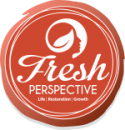Reading Labels really is a must do.
Buying Packaged Foods? Read the Label!
If you’re not trying to lose weight and you don’t have restricted dietary requirements, does it matter what the food labels say? After all, if it was really bad, it wouldn’t be on the shelf anyway, would it?
Businesses who make food are trying to do the same thing as every other business – make money. Some companies are making food with cheaper ingredients that may be laden with harmful chemicals and additives, without any concern for the consumer. Some food manufacturers haven’t kept up with the latest nutrition research and education. They use cheaper substitute ingredients that may deliver more of a profit, but fail to deliver the health and wellbeing that we deserve.
That’s why knowing how to read a food label is so important.
When we read the ingredients on packaged food, we often see things that sound exotic or scientific, such as high fructose corn syrup, multi dextrose, raising agents, gums, emulsifiers etc. Most of these ingredients help to make the product look more attractive, enhance the taste and texture of the food, and help it last longer on the grocery store shelf. But these additives do nothing for the health of our bodies. These ingredients have often been modified, which makes it harder for the body to identify and then process. We’ve been conditioned to believe that food should look and taste a certain way – that bread should be soft and chewy, and that nut milk should be smooth and lump-free. But for the sake of our health, we need to change that conditioned point of view.
Real vs Synthetic Ingredients
Ingredients with numbers attached are sometimes completely synthetic. To the body, these are foreign substances it doesn’t recognise and will therefore need to work extra hard to remove them from our systems. Our bodies already deal with an overload of toxins from our everyday environment. Toxins in food are something it can certainly do without.
Named ingredients such as syrup, isolates, and starch, have usually been extracted from a whole food and are sometimes altered to give the product a longer shelf-life, make it more stable, or more appealing.
A common word you’ll see is “flavour”. This is usually a complete synthetic molecule and one of the biggest chemical additives in our food today. Even “natural flavours” are copied molecules from the natural flavour or food and put together with artificial substances, that are not natural 1
Over time, these substances can accumulate and become a toxic overload as they are in everything. Our bodily organs, whose job it is to detoxify our system, may have to cycle them several times, changing the structure of the substance each time which can cause an additional toxic release. Overtaxing your system makes it even harder to rid additional toxins, giving them free rein to move around and cause more harm. The body tries to protect us by placing the toxins in our fat cells to keep them locked away and less able to cause harm, sort of like encased in a insulative capsule. They can stay with us for many years, further impacting our bodily functions and the way that we feel overtime.
Quantities
Ingredients are listed on the packet in the order of quantity. If the first ingredient is “sugar”, put it back on the shelf! (Products like dates, prunes and other natural sugar sources can be problematic too if these become a regular food in your diet.) A general rule is to look for products with less than 10 gms of sugar per 100 gms 2. Remember, all sugars, natural or otherwise, will spike your insulin levels, that impact immunity, your inflammation and energy.
When choosing packaged foods, try to look for those that contain just three to four ingredients (or more if you’re buying say, a vegetable soup or something that contains many herbs and spices). If the label indicates that the product has been concentrated, reconstituted or dehydrated, it means the food has been altered by heat, or will oxidise when exposed to light and oxygen. The product’s whole food structure and nutritional value will therefore have changed and now is becoming less recognisable.
Salt is known to be a problematic substance when taken in large quantities, especially ordinary table salt (sodium chloride) which may also include preservatives, filling agents and fillers. Processed foods often contain large amounts of sodium chloride. However if the product label includes sea salt or Himalayan Pink Salt, you may find this is a healthier product than most. Whilst sodium chloride is still a salt, “the jury is out, on really how being bad it is for us, with “evidence linking sodium intake to mortality outcomes is scant and inconsistent” 3
Country of origin or manufacture
It can be hard to find a country of origin notification on our food labels, especially for ‘home brand products.
But we need to know where our food is coming from. Different countries employ different farming and manufacturing techniques. There may be issues with environmental pollution and labour conditions. Their ingredients may be slightly different in composition and taste to those that are sourced locally. If a product has been transported a long way, we need to consider how it has been stored and preserved. The food may have been exposed to sprays and different temperatures in transit. Many countries have strict quarantine controls, and produce must be sprayed for unwanted pests before it can be distributed. This spray may well be toxic to human consumption. So educating yourself on the origin of ingredients and where they are naturally grown will become part of your learning.
Products that originate in water such as fish, shellfish and seaweeds may have been contaminated by pollution and environmental disasters. Even today, Fukishima still spills radioactive water into the ocean 4
Our natural environment is becoming more polluted, with questionable methods used in mass food production. Some produce is simply not suitable to be mass grown in the opposite hemisphere to which it originated. Plants are seasonal for a purpose – to capture the goodness of the environment at the optimal time, and create the greatest nutritional value within itself. Now, we find algae spirulina being grown in covered pools in South Korea, and meat grown out of petri dishes in the United States.
It’s best to source local fresh or frozen produce whenever you can. Online stockists can also deliver foods that you know comes from safe locations. For example, wild Alaskan salmon comes from areas where fish farming isn’t allowed 5
What about kilojoules?
Counting kilojoules isn’t a great approach to health and wellbeing. You should of course, consider the amount of food that’s best for you to maintain a healthy weight based on your energy needs. But I encourage you to focus on the quality and nutritional value of your food, rather than how many calories it provides. Remember, whole foods are best!
Not all kilojoules are created equal, and because we survive on a combination of macro and micronutrients, it’s important that you choose the right ones for optimal health. Consider this table:
Macronutrient
Fats Carbohydrates Proteins
Good Coconut & its oil Avocado & its oil Olives & its oil
Seeds some as oil & some never heated
Nuts & some as oil Grass Fed Butter Ghee High fibre nutrient dense and slow releasing such as whole fruits and vegetables
Organic/Grass Fed Protein as close to natural as you can find proteins.
Bad Hydrogenated & refined oils Sunflower, Safflower, Soy, Canola, Caster, Corn and Cottonseed Peanut
Grapeseed
Vegetable oil
Margarine Processed which turn to glucose almost immediately once eaten with extremely little nutritional value
Sugars
Refined Grains
Whole Grains
Starches Adulterated highly processed chemical laden
Processed cold meats
Preserved meats with some metals
Factory raised and feed Beef/Chicken
Different macronutrients are used in the body in different ways, and some parts of the body require different macronutrients to function correctly. For example, the brain uses fat as its fuel source, and quick-twitch muscles prefer carbohydrates.
Serving sizes
I’m not convinced how useful is the ‘number of serves per package’ notation on food labels. These notations are usually referenced from the decades old ‘Food Pyramid’ which has been questioned by nutrition experts the world over, and is no longer recommended by the American Heart Association
Instead of focusing on the ‘serving size’ column, take a look at the ‘per 100gm’ column, and see just how much fibre, sugar, fat and protein the product contains. You’ll then be able to work out how much you should be eating based on your activity and the other foods you’ve eaten throughout the day.
A good approach to take is to consider the food in the form of nutrients, and eat mostly foods that have a high nutrient to kilojoule ratio. Look for trustworthy brands and use them as your staple go-to. Learn about their supply chain, how their foods were produced and if their company ethics and values are aligned with environmental and consumer health and well-being.
Finally
Choose real whole foods, not those from a packet. Whole foods are generally lower in kilojoules, free of additives, preservatives and sweeteners, and are packed with vitamins and minerals. Buy eating whole foods over processed, and choosing packaged foods wisely, your addiction and obsession with sweet and salty foods will dissipate. If you want to indulge now and then, make sure you exercise portion control.
If you’re not really sure what the ingredient is on a food label, put the product back. If you really want to know what it is, look it up. It’s important to be educated about what we’re putting into our mouths, for the sake of a better, healthier life.
1 Eric Schlosser’s Fast Food Nation – The Dark side of the All-American Meal 2001
2 Pubmed 2018 Jul 29;10(8). pii: E989. doi: 10.3390/nu10080989. French Recommendations for Sugar Intake in Adults
3 https://draxe.com/pink-himalayan-salt/
4 https://www.news.com.au/technology/environment/conservation/risky-stalemate-as-science-battles-human-fears-at-fukushima/news-story/220c45378da8f59b1672731b4f3ee35b
5 https://www.pri.org/stories/2017-09-19/instead-fighting-global-competition-alaskas-salmon-industry-reluctantly-embracing
6 Teicholz N Investigative Journalist and author of Big Fat Surprise – Political view of the story of fat & debunking the general thinking interview 2017




